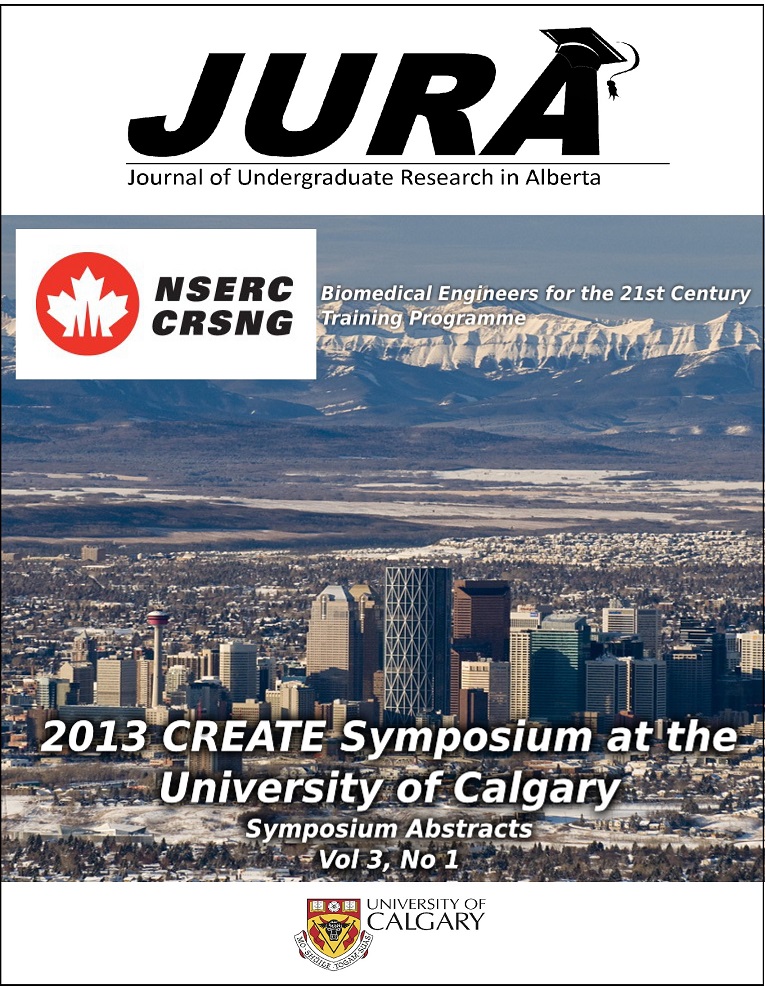Tibiofemoral surface modeling for joint mechanics analysis
Abstract
INTRODUCTION
Small changes in knee joint mechanics are hypothesized to be a contributing factor in the initiation and progression of osteoarthritis. Our lab will analyse parameters of joint contact mechanics based on the relative position and separation of articulating surfaces (e.g., proximity distance).
This summer research project aimed to optimize an existing Thin Plate Spline (TPS) mathematical surface modeling routine [1] for human bone surfaces. These modifications were necessary to accommodate differences in surface digitization methods, scan resolution, desired surface model grid resolution, and to model the highly curved femoral surface.
There were three main research objectives: (1) determine the number of sample points needed to ensure a dense and continuous grid without holes, (2) determine a method to model curvatures greater than 75o, and (3) determine the degree of surface smoothing.
METHODS
To answer the first question, the number of surface points (SP) and grid cutting distance (CD) were systematically increased from 5000-9000 and 1.5-2.0, respectively. Fast computation times and a continuous spline grid (i.e., no holes) were the criteria used to determine appropriate SP and CD optimisation parameters.
Two approaches that sectioned the femoral surface into 3 components were evaluated. Sectioning the femur was done in an effort to circumvent the curvature errors that occurred when modeling the femoral surface (Figure 1.a.). Each method rotated the anterior and posterior data tangentially to the xy-plane, which reduces spline fitting errors. The most important criteria for selecting the final approach was to keep the seams of the three femoral TPS sections away from the main distal contact area.
Lastly, the amount of tibial smoothing was evaluated over a range smoothing factors (λ=0.2-2.2), and the resulting surfaces compared to completely interpolated and noisy (1mm random noise) surfaces .
RESULTS
Acceptable grid continuity and computation time (~1.7mins) were found at 5000 SP and 1.5mm CD for the tibial surface. Both 5000 SP with 1.8mmCD and 7000 SP with 2.0mm CD gave a continuous femoral spline grid, but resulted in longer computation times. At 9000SP, the spline grid was always continuous at the cost of greater computation time (10 minutes+ at all CD values), but curvature errors remained.
Sectioning the femoral surface (anterior, posterior and distal) eliminated these curvature errors (Figure 1.b). However when tibiofemoral proximity was calculated, significant errors occurred at the two seams of the surfaces.
Figure 1. Sample size of 5000pts and 2.0mm CD a) Original TPS fit b) TPS fit with 3 surface sections.
Based on the sensitivity analysis of λ values, λ=0.3 was chosen to test whether this resulted in a sufficient amount of tibial surface smoothing. The chosen smoothing was very close to the interpolated surface, but did not smooth out the added noise sufficiently.
DISCUSSION AND CONCLUSION
Appropriate SP and CD values were determined for tibiofemoral surfaces, and by sectioning the femoral surface into 3 components reduced spline fit artefact at the highly curved anterior and posterior femoral regions. A sectioned femoral surface improved the TPS geometric fit, but errors persisted when tibiofemoral proximity was mapped. The section methods developed here therefore require further refinement for proximity distance mapping. Lastly, more smoothing is likely required for tibial surfaces. This work is an important first step towards optimizing tibiofemoral surface modeling used in joint contact mechanics.
REFERENCES
1. Boyd, SK, et al. J Biomech Eng 121: 525-532, 1999.
Downloads
Downloads
Additional Files
Published
Issue
Section
License
Authors retain all rights to their research work. Articles may be submitted to and accepted in other journals subsequent to publishing in JURA. Our only condition is that articles cannot be used in another undergraduate journal. Authors must be aware, however, that professional journals may refuse articles submitted or accepted elsewhere—JURA included.


